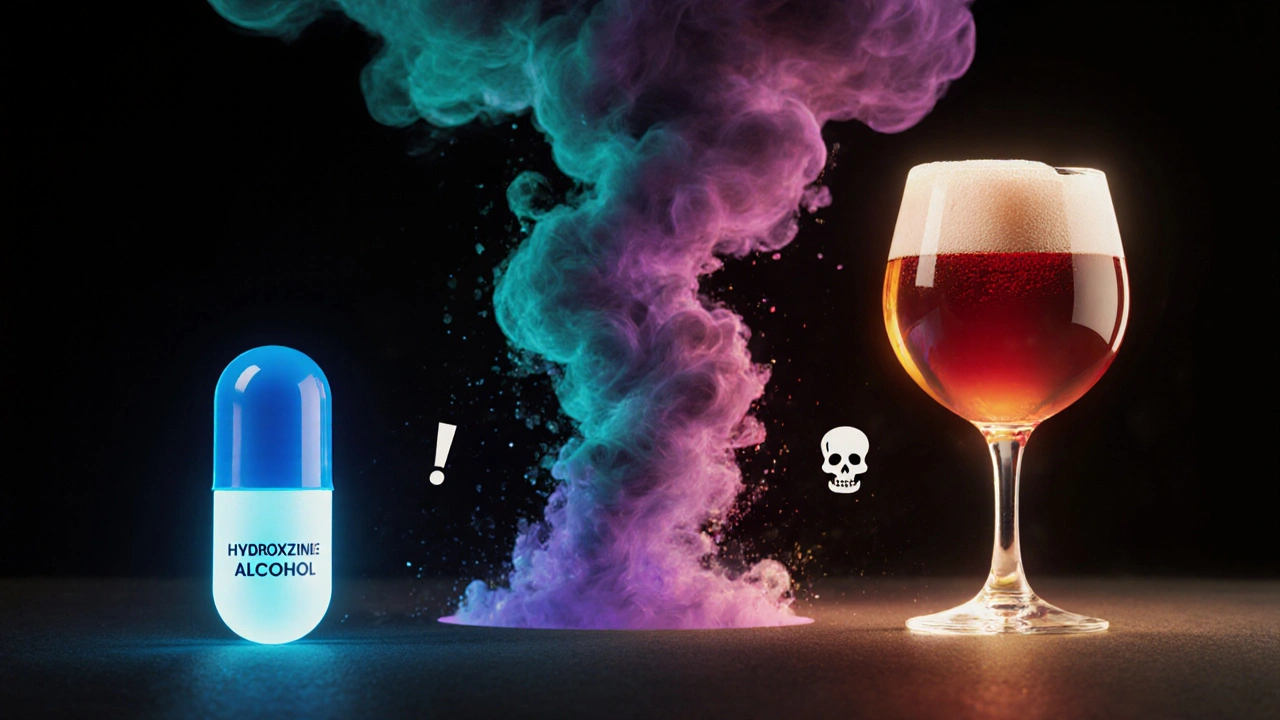Hydroxyzine Risks: Understanding Side Effects and Safety
When working with Hydroxyzine, a first‑generation antihistamine used for anxiety, allergy relief, and sedation. Also known as Vistaril, it blocks histamine receptors and has calming effects on the central nervous system.
Hydroxyzine belongs to the broader class of Antihistamines, medications that counteract the body’s histamine response to allergens and also cause drowsiness. Because it crosses the blood‑brain barrier, the drug often produces hydroxyzine risks like pronounced sedation, dry mouth, and blurred vision. These effects are directly tied to its anticholinergic properties, which also raise concerns about urinary retention and constipation, especially in older adults. Another serious concern is QT Prolongation, a heart rhythm change that can lead to dangerous arrhythmias when hydroxyzine is combined with other QT‑affecting drugs or taken in high doses. The drug’s metabolism via the CYP3A4 pathway means it easily interacts with many prescriptions, over‑the‑counter remedies, and even some herbal supplements. Understanding these interactions helps you avoid additive sedation or toxic buildup that could strain the heart or liver.
Managing Drug Interactions, the ways different medicines affect each other's absorption, metabolism, or excretion is key to staying safe with hydroxyzine. For example, combining it with other central nervous system depressants like benzodiazepines or opioids can amplify drowsiness and respiratory depression. Alcohol, certain antidepressants, and some antibiotics also slow the drug’s clearance, increasing the chance of QT prolongation. Patients with pre‑existing heart conditions, liver disease, or a history of seizures should discuss dosage adjustments with their provider. Monitoring strategies include checking heart rhythm with an ECG if you’re on multiple QT‑affecting agents, and tracking any new or worsening side effects, such as extreme fatigue or confusion. By staying aware of these hydroxyzine risks, you can weigh the benefits of allergy relief or anxiety control against potential harms, and make informed choices about dosing, timing, and complementary therapies.
Below, you’ll find a curated set of articles that break down each of these issues in plain language. From practical tips on spotting early signs of sedation to detailed guides on how hydroxyzine interacts with common meds, the collection equips you with the knowledge you need to use this antihistamine responsibly.
- October
15
2025 - 5
Hydroxyzine and Alcohol: Why This Mix Is a Hazard
Learn why mixing hydroxyzine with alcohol is risky, recognize danger signs, and get safe alternatives. Follow clear guidelines to protect your health.
Read More